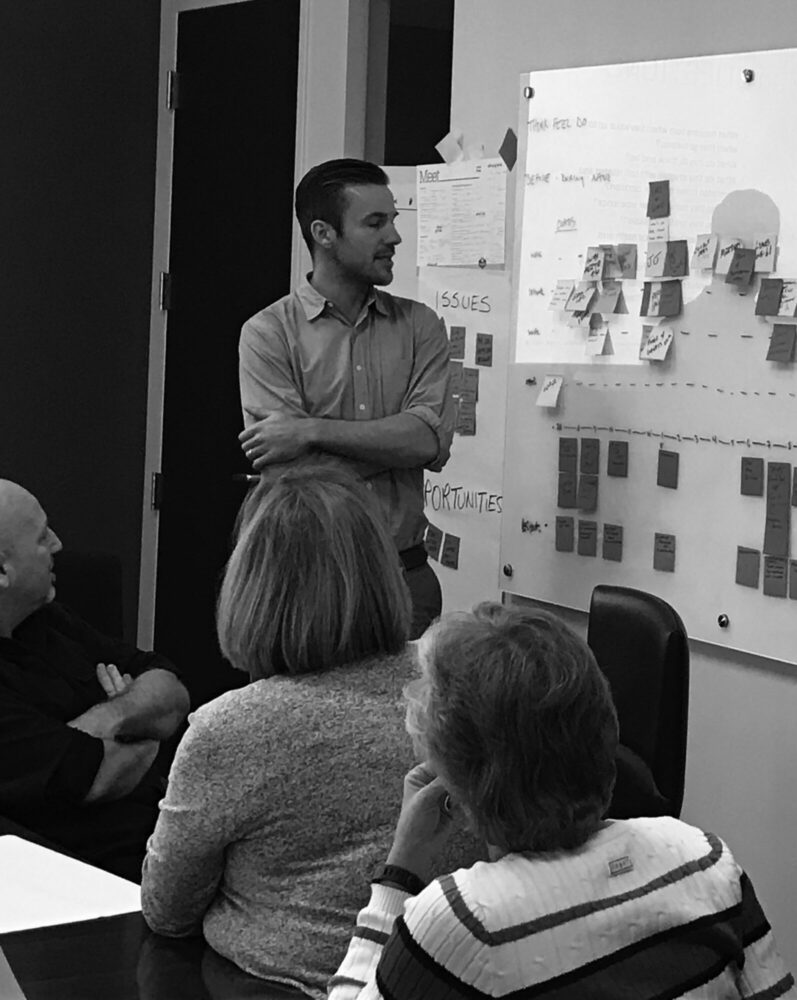Elevate Your Healthcare Marketing & Content with Mixed Methods Research
“Mixed methods research is a methodology of research that advances the systematic integration of quantitative and qualitative data. The basic premise of this methodology is that such integration permits a more complete and synergistic utilization of data and is encouraged as a better approach to understanding.” —Agency for Healthcare Research and Quality
In other words, this type of research can be a boon for truly understanding a person’s behavior and then crafting health content and marketing stories with the right patient populations.
Healthcare marketers collect countless data points from Press Ganey, NRC and the like to drive decisions and plan how best to invest marketing dollars. While large in quantity and in general breadth, these data points lack nuance, depth, and (most importantly) human context. Adding qualitative research and insights to the mix can add a face and a voice to that data—ultimately complementing, supporting, and driving your overall content marketing strategy.
Qualitative research illuminates the WHY and gets to the depths of human understanding of a patient or consumer population. Qualitative data, collected through one-on-one interviews and in-person research, enables a marketer to unearth human stories and fine-tune messaging strategies driven by quantitative data.
The outcome? Authentic, human-centered and effective healthcare marketing and content that is relevant, engaging, and accountable.
What Does Qualitative Research Look Like in Healthcare Marketing?
Many digital healthcare marketing agencies tout messaging that captures “human understanding,” but so often that version of human understanding is gathered through digitally collected quantitative data tools.
At LIFT we honor the value of quantitative data but rise to a higher power. If marketers truly want to understand their audience—and in healthcare, that means to understand the stakeholder, as a consumer, a patient caregiver, a family member, or clinical staff member—they can’t just rely on quantitative data points. Marketers need a deeper, richer perspective that can only be gathered through qualitative research. Quantitative data should always be substantiated and enriched with one-on-one, face-to-face interviews that build a deeper stakeholder perspective. And it leads to a treasure trove of relatable human stories.
The stories and insights LIFT collects when spending time learning from patients and related stakeholders become a Rosetta Stone of creative and strategic understanding—fueling and speeding the creative process. We call it Creative and Strategic Velocity—and it will make excellent use of marketing investments when creating content and marketing programs at scale.
But Why Now?
In the healthcare marketing arena, patient understanding, empathy, and the rich insights that come through in-depth qualitative research is just picking up speed. It’s a fresh and powerful tool that hospital and health system marketers should add to their arsenals. But most significantly, healthcare marketing professionals are just starting to genuinely care about the patient’s lived experiences—much has changed across the last decade in healthcare: how hospitals interface and market to patients, how hospitals perceive them as customers, and how hospitals are now being compelled to educate and nurture a more competent consumer and community.
Not until the Affordable Care Act and the 21st Century Cures Act did the patient voice really start to matter in healthcare economics and in healthcare marketing strategy. And now, there are tools and resources that can not only make a marketer’s dollar go further but that also will help a healthcare marketer engage with, educate, and empower a more competent healthcare consumer.
Now hospital and health system marketers can market with a mission—they have the power to educate consumers, empower competency, inspire loyalty, and change behavior.
Understanding and Empathy Drives Effective Healthcare Marketing and Content.
There’s no shortage of healthcare content available to consumers—in fact, most healthcare marketing content is nothing more than a commodity. Hundreds of digital articles flood the internet about heart care or chronic disease maintenance. But qualitative insights and the rich stories that come from an empathic desire for real human understanding will distinguish a content strategy to help a hospital or health system stand out in a crowded field while also supporting the hospital’s strategic objectives.
Qualitative insights:
- add nuance to healthcare content and marketing messages.
- pull in the voice of the patient to the front of a strategy.
- provide healthcare marketers a relatable path to engage in story telling and powerful conversations that are as valuable to the brand as they are to the patients a health system seeks to care for.
REMEMBER: Patients Do the Things They Do for a Reason.
Human behavior dictates that people do things for a reason—and in developing a healthcare marketing strategy, those reasons aren’t always clear or easily understood. If healthcare marketers can gain insight to the factors that drive a consumer’s behaviors and decision-making, they can try to nurture a level of human understanding into their marketing investment with positive long term financial outcomes.
Hospitals and health systems can engineer content to nurture a more competent healthcare consumer and to engage them in their health and well-being. By fostering well-being in communities, marketers have the potential to get consumers into the system at the most appropriate level of intervention.
In short, marketers can leverage their investments to do more. To turn marketing into a form of healthcare. And that’s where mixed methods research can help marketers realize unique value and support their mission.

Putting These Principles Into Practice (Click to Download the Full Case Story)
Who: LifePoint Health
What: A strategic design workshop informed by qualitative insights for a well-rounded engagement designed to uncover audience segments sentiments.
Why: Explore patient-centered ways to build marketing campaigns across a range of markets.
Opportunity: To change behavior and build consumer competency around urgent, emergency, and primary care; for service line growth.
When approached to envision an innovative way to engage with, educate, and empower consumers when making important decisions around urgent, emergency, and primary care, we understood that we would need a deep and nuanced understanding of the consumer to make recommendations that stood out in a crowded field.
For this project, we tapped into LIFT’s body of qualitative research insights and blended LIFT qualitative data with client-provided secondary quantitative research (Press Ganey and market segment data) to set the stage for a strategic design workshop. This workshop would serve as a catalyst for the creation of marketing and content prototypes that would ultimately fuel healthcare consumer competency and service line growth.
Key areas of focus for marketing and content programming were promoting desirable consumer behaviors, nurturing a consistent consumer experience, and nurturing consumer competency. These three areas of focus can help consumers make the right choices between primary, urgent, and emergency care.
By leveraging existing bodies of research and insights, and engaging a multi-disciplinary team from the health system, we were able to move quickly to fill knowledge gaps and set a solid foundation for strategic thinking and ideation. The goal was to explore novel and patient-centered ways to build marketing campaigns usable across a wide range of markets.
